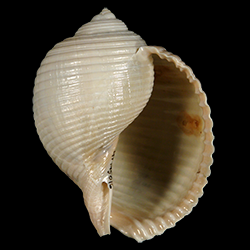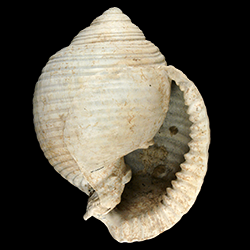
Tonnidae

- Phylum: Mollusca
- Class: Gastropoda
- Order: Littorinimorpha
- Family: Tonnidae
Overview
Common name: Tun shells or cask shells
Key morphological features: The Tonnidae are medium to large sized gastropods with thin, globose, relatively low-spired shells. The body whorl is large and the shell exterior features spiral cords. The aperture in adults is wide and the labrum is slightly thickened, flared, and crenulated, matching the exterior sculpture. The siphonal canal is short and wide, and the anal canal is often absent. Source: Davies, A.M. 1971. Tertiary Faunas Vol. 1, second edition. New York: American Elsevier Publishing Company, Inc. 571 pp.; Tunnell Jr., J.W., Andrews, J., Barrera, N.C., Moretzsohn, F. 2010. Encyclopedia of Texas Seashells. College Station: Texas A&M University Press. 512 pp.
Geological range: Eocene to Recent (Davies, 1971).
Geographic distribution: A distributional map for modern Tonnidae may be accessed from OBIS. A distributional map for ancient Tonnidae may be accessed from the Paleobiology Database.
Diversity: There are 33 recognized living species of Tonnidae and 3 genera (WoRMS database, unvetted). The Paleobiology Database recognizes 6 fossil genera and 49 fossil species of Tonnidae (unvetted).
Paleoecology: The Tonnidae semi-infaunal, carnivorous, marine gastropods. They live in soft substrate tropical habitats worldwide, at both shallow depths and on the continental shelf and slope. Source: Tunnell et al. (2010).
Phylogenetic status: Unknown.


